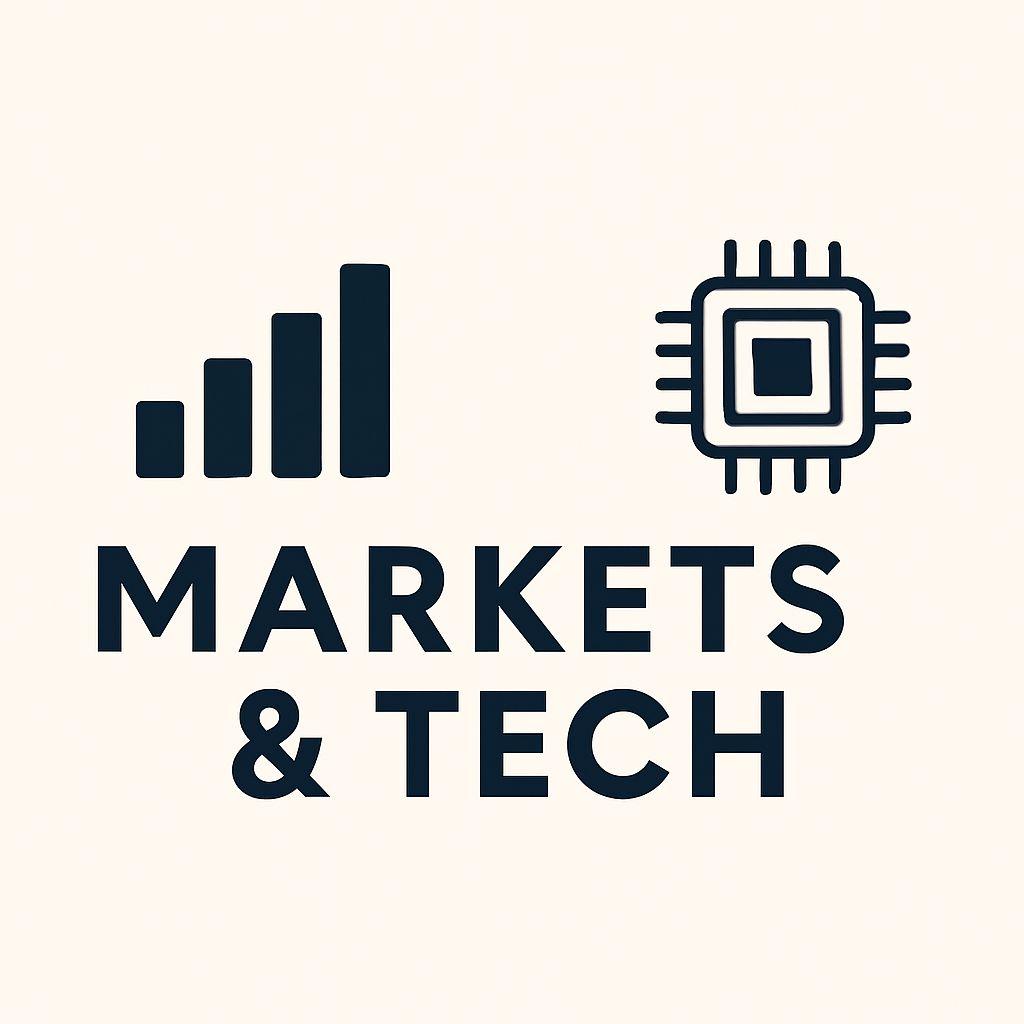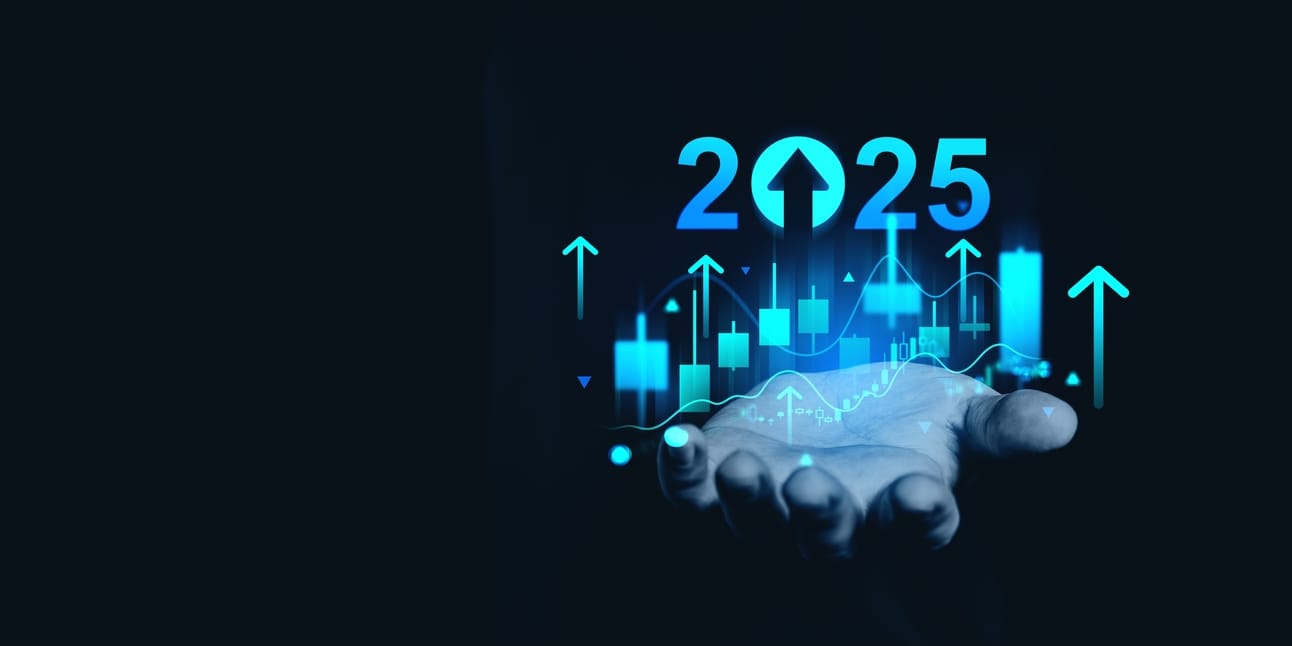INSIGHT WEEKLY: May 25, 2025
📩 Images not loading? Click “Download external images” or read the full magazine online via the link above.
⏳ 5 minutes reading time.
And to refer to during the week.
Stay ahead without the overload.
500+ professionals have subscribed to this magazine.

🌐 Markets Overview

📈 Markets This Week: Tariffs create volatility again

Markets are moving up and down in the last few weeks, with moves of over 2% in either direction.
Last week’s rally was due to the pause on China tariffs.
This week’s decline was for a few reasons:
The first was the weak auction of 20-year US Treasury bonds, mostly due to the Moody’s downgrade of US sovereign debt last week. This pushed bond yields higher (bond yields and prices move in opposite directions).
Then, Congress passed a tax bill, which includes a number of tax cuts. There were already concerns about the debt, and now the new tax bill will increase it even further over the next few years.
Next came the tariff announcement: 50% on the EU as the trade talks are “going nowhere” and 25% on iPhones unless Apple moves production to the US.
Most markets followed the US down, except India’s Nifty 50, which gained over 5% in the week due to investor optimism about prospects.
U.S. markets will be closed Monday for the Memorial Day holiday.
Tech stocks

Tech stocks reflected negative market sentiments:
Apple led the decline with a steep -7.6% drop due to breaking news on competition and tariffs.
Former Apple design chief has joined forces with Sam Altman’s Open AI to build new hardware for AI (see below). These new products will be competing with Apple’s iPhones, laptops, and tablets.
Also, President Trump announced tariffs of 25% on iPhones to add pressure for these to be built in the US.
Tesla fell -5.3%, extending its YTD loss to -22.0%, as concerns persist over demand and competition in EVs despite Robotaxi announcements.
🧭 Macro Watch: This Week’s Economic Developments
Here’s a quick roundup of this week’s key economic developments across major economies.
🇺🇸 United States
Tariff Escalations: President Trump announced a 25% tariff on non-U.S.-made smartphones and a 50% tariff on EU imports, effective June 1. These measures have heightened trade tensions and introduced new uncertainties into the market.
Tax Legislation: The House narrowly passed a $3.8 trillion tax and spending bill, dubbed the “big, beautiful bill,” which includes corporate tax cuts and infrastructure spending. However, economists express skepticism about its long-term economic benefits, citing concerns over increased deficits and potential inflationary pressures.
US debt: It is interesting that on Saturday, US Treasury Secretary Scott Bessent stated that it is better to "grow our way out of it" by having GDP run higher than nominal yields than to cut spending to reduce the deficit.
So cutting federal spending to fix the deficit is no longer the plan?
Can the economy be engineered to grow faster than the debt?
🇬🇧 United Kingdom
Inflation Rise: UK inflation rose to 3.5% in April, the highest since January 2024, driven by increased energy and water bills, as well as higher business taxes. This unexpected rise may influence the Bank of England’s future interest rate decisions. As the chart below shows, the real rate of interest (adjusted for inflation) has narrowed to 0.75%.

Public Borrowing: Public sector borrowing in April reached £20.2 billion, exceeding forecasts and marking one of the highest April borrowing figures in over 30 years. This raises concerns about the UK’s fiscal health and potential future tax increases.
Consumer Behavior: The UK savings rate increased to 12% by the end of 2024, the highest since 2010 (excluding the pandemic), indicating cautious consumer behavior amid economic uncertainties.
🇩🇪 Germany
Economic Growth: Germany’s economy grew by 0.4% in Q1 2025, double the initial estimate, driven by strong exports and manufacturing performance. However, concerns remain about the impact of U.S. tariffs on future growth.
🇪🇺 Eurozone
Growth Forecasts: The European Commission downgraded its 2025 GDP growth forecast for the eurozone to 0.9%, citing the impact of U.S. trade policies and global economic uncertainties.
If you like this newsletter, please send this link to friends, family, and colleagues and post it on social media. https://insight-weekly.beehiiv.com/subscribe
🌐 Artificial Intelligence and Tech

This cover has been designed using assets from Freepik.com
OpenAI has acquired LoveFrom’s hardware spinoff, known as “io” for $6.4 billion. The move signals OpenAI’s entry into hardware, aiming to build consumer-grade devices designed specifically for the era of artificial general intelligence (AGI).
Jony Ive, the legendary former Chief Design Officer at Apple (the man behind the iPhone, iMac, and Apple Watch), left Apple in 2019 to found LoveFrom.
Since 2023, he has been in discussions with OpenAI CEO Sam Altman about reimagining what personal AI devices could look like, moving beyond screens and keyboards.
Their joint venture “io” started in 2024 as a stealth hardware startup incubated by LoveFrom and backed by SoftBank and OpenAI, with a vision to “define the AI-native device.”
Now it has been acquired by OpenAI. Why acquire when it is already a joint venture?
OpenAI wants to integrate io’s team and tech directly into OpenAI’s core operations, as well as have full control over the hardware roadmap, hiring, IP, and product direction.
What to Expect:
The first product may be a wearable or ambient device, not a traditional phone or laptop.
Integration with OpenAI’s real-time GPT models, voice interfaces, and possibly custom hardware (for example, chips or low-power AI processing).
Targeted launch window could be late 2025 or early 2026, possibly previewed at a dedicated developer event.
Tesla Announces Robotaxi Launch and plans to initiate its robotaxi service in Austin, Texas, by the end of June 2025, starting with a limited fleet of 10 Model Y vehicles. This pilot program represents a significant step toward fully autonomous ride-hailing services.
Also, Tesla is advancing the development of Dojo 2, its next-generation custom-built AI supercomputer designed to process massive volumes of video data collected from Tesla vehicles on the road. Dojo 2 plays a critical role in training the neural networks that power Tesla’s Full Self-Driving system, enabling faster learning from real-world driving scenarios. This infrastructure is essential for the Robotaxi program, allowing Tesla to improve safety, handle rare edge cases, and accelerate the path to full autonomy.
Apple to Open On-Device AI Models to Third-Party Developers, which is a major shift expected to be unveiled at WWDC 2025, its annual Worldwide Developers Conference.
Scheduled for June 9 to 13, WWDC is Apple’s premier event for announcing software updates, developer tools, and strategic platform shifts. The new initiative would allow third-party apps to integrate directly with Apple’s own language models, enabling low-latency, private AI interactions that run entirely on-device. This aligns with Apple’s privacy-first philosophy and could give it a performance and security edge over cloud-based AI platforms.
Amazon Develops ‘Olympus’ AI Model
Amazon is reportedly developing a large-scale AI model, codenamed “Olympus,” featuring 2 trillion parameters. This ambitious project aims to bolster Amazon’s position in the AI landscape, potentially reducing its reliance on external models. Olympus is expected to enhance Amazon’s capabilities in processing and understanding complex data, contributing to advancements in services like AWS and Alexa. The development reflects Amazon’s strategic focus on expanding its in-house AI infrastructure.
Get your free guide to AI
🌐 Crypto Corner
Top 10 cryptos:

Bitcoin rose +4.5% this week, continuing its strong momentum, and set a new record during the week. It now up +15.9% year-to-date. Investors appear unfazed by broader macro volatility, with capital rotating into major tokens amid growing institutional interest.
15 years ago, a software developer paid 10,000 bitcoin for two pizzas. That would be $1.1 billion in today’s value!
Solana outperformed with a +4.6% weekly gain, bouncing back after earlier YTD weakness (still down -7.2% YTD). Renewed developer activity and network resilience post-outages may be driving sentiment.
See the previous spotlight on Bitcoin halving
If you liked this newsletter, please send this link to friends, family, and colleagues and post on social media. https://insight-weekly.beehiiv.com/subscribe
Stay tuned for more insights and updates each week.
